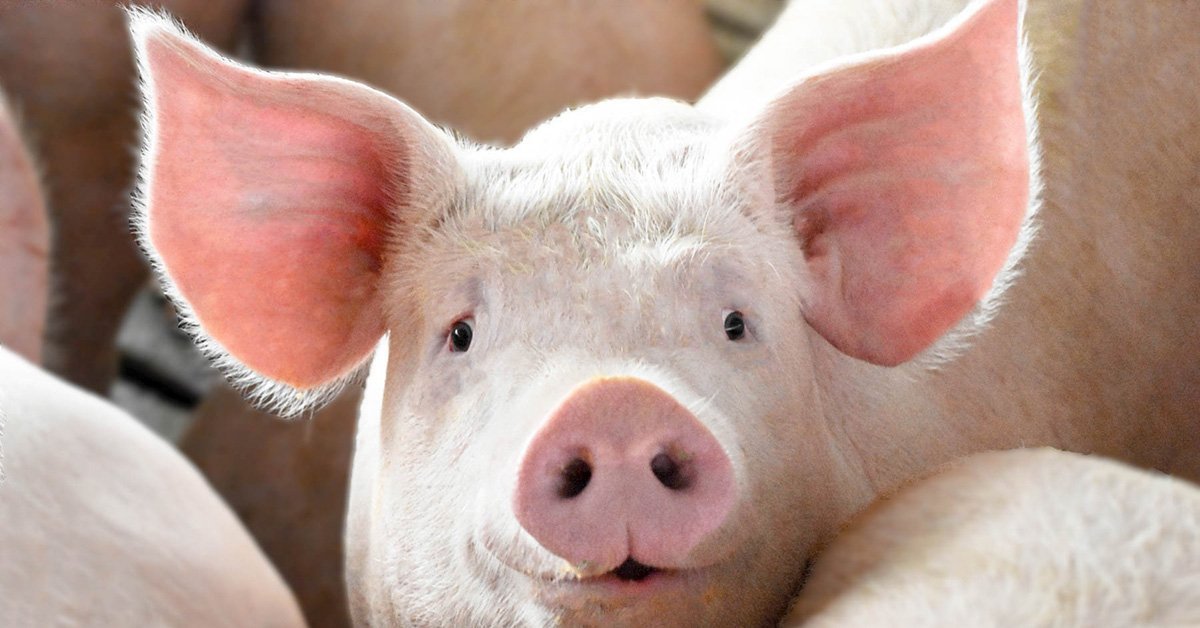A Feeding Guide for Pigs Throughout Their Life Stages

Are you toying around with the idea of getting pigs? Are you new to raising pigs and want to make sure you are feeding them as best as you can? We understand there can be an overwhelming amount of information out there when you are trying to figure out what to feed. It’s not always easy to know where to start when deciding what raising pigs may look like for you.
When talking about taking care of pigs and swine (pig) nutrition, it is normally split up into different growth and life phases. Each phase of a pig’s life can come with its own unique goals and challenges. Therefore, today, we will cover the main points of focus and concern when feeding pigs during each of these stages of life.
Feeding Nursery Pigs
If you hear someone referring to a nursery pig, this generally includes pigs that are in their first few weeks post-weaning. For commercial pigs, this should be from when they are weaned, until about 25-30 pounds, though sometimes can refer to pigs as big as 50 pounds. The main goal of the nursery period is helping piglets cope with weaning and transitioning to eating on their own, which is probably this most crucial period in a pig’s life. Feeding the right nutrition at this stage is absolutely essential to setting pigs up for success for the rest of their lives. It is a huge transition to go from mom’s all milk diet to solid feeds. Their little bodies are typically being exposed to all types of new stressors, like a new environment, mixing with new peers, new feeding routines, and last, but not least, going to a completely new diet. This change is more extreme at younger weaning ages. Switching from a liquid to a solid diet is a big change because of how it affects their digestive lining and gut. This process requires time, attention to detail, and extra care to help your pigs adjust.
Swine nutritionists keep this in mind when formulating nursery pig diets in order to help them start on feed successfully and keep them coming back for more. Some things to look for in an early nursery feed program are:
- Milk products (whey, whey permeate, or lactose)
- Highly digestible proteins (soy protein concentrate or spray dried animal plasma): Pigs are growing so fast in this stage and these help provide necessary protein. It is also a good idea to limit the amount of soybean meal used in early nursery diets. While some is certainly fine and recommended, the exposure to soybean meal must be limited and slowly increased over time because young nursery pigs’ digestive systems are more sensitive to it, until they get older.
- Pellets: Piglets can’t fit a lot of food in their mouth, yet. Feeding pellets initially ensures piglets are getting all the essential nutrients in proper balance without the ability to sort anything out.
- Tasty ingredients and attractants will bring pigs to the feeder, adapt healthy eating habits and keep them coming back for more. These can include flavors, sweeteners, as well as some of the other ingredients already listed above.
- Gut health promoting products: These will help aid in gut health as it adapts to new diets and new challenges the pigs haven’t seen before. These ingredients include probiotics, prebiotics, acidifiers, etc.
As you may have guessed, all these ingredients can be expensive, so a good nursery program can generally be broken down further into multiple phases of their own. These are designed to target a nursery pig’s specific needs as they grow, and phase out ingredients no longer needed to save costs. For example, as a pig graduates from milk to feed, milk proteins will gradually be replaced by bulk grains, like soybean meal. Generally speaking, once a nursery pig is about 25 pounds and has been weaned for a little while, their digestive system has matured to a point that they can start eating more adult-like, grain-based diets.
Feeding Grower-Finisher Pigs
When pigs are considered growers, they are normally between 25-125 pounds. “Finishing” refers to pigs larger than “growers”, until the time they are ready for harvest. Today’s commercial pigs are normally harvested at 270-290 pounds. Younger pigs have higher energy and protein requirements as compared to older finisher pigs. Pigs in these phases can eat both pellets and meal feeds. Pigs eat to meet their energy requirement, so you can have clean, fresh feed and water out in front of your pigs at all times, and they can eat as they please. Providing feed at all times and letting them eat when they want is called “ad libitum” feeding.
Particle size of the grains is important here. If the grains are ground too coarse it can result in the feeds being digested less efficiently. However, too fine and it could possibly result in stomach ulcers. Similarly, to the nursery period, a growing-finishing pig can be split into different feeding phases that more closely targets these pigs’ specific nutritional needs which can also help maximize cost savings.
Feeding Breeding Swine:
Sows
Sows need feed to provide for their own bodies’ needs AND for 10-18 growing piglets. Maintaining proper nutrients within a healthy portion size is key for pregnant sows. It’s important to feed to meet the sow’s proper body condition. Depending on genetics, certain sows can hold their weight differently, however, there are several tools available, like back-fat meters, caliper measuring tapes, and various programs or industry materials, that can serve as aides to help you get an eye for what is ideal. A gestating sow typically eats about 5-6 pounds of feed per day, depending on her body condition. A fat sow can have a host of complications, including lower milk yields, difficulties during birth (farrowing), and problems with breed back. Feeding various high fiber ingredients can help gestating sows feel satiated while on limited feeds.
When a sow has farrowed and is now producing milk for her litter, she needs access to clean, fresh feed and water at all times. Lactation is not the time to try and adjust feed intake for body condition concerns. Lactating sows should be fed ad libitum. Lactating sows require higher energy and protein diets in order to meet the highly demanding job of feeding a full litter.
In general, a big focus with sows is on health and longevity. Again, body condition will play a big role in this, but making sure you are feeding them a diet with adequate vitamins, minerals and ideally, gut health promoters, will support the best health and production from each sow.
Gilts
Older gilts, weighing about 230 pounds and more, normally have their own unique nutritional needs (i.e., lower energy to reduce over-conditioning) to help prepare them for future litters and to maximize their health and longevity. Bone strength is very important for both replacement gilts and sows.
Boars
Did you know that added vitamin C helps with sperm motility? Our swine nutritionists have formulated our breeding stock products with boars’ needs in mind to ensure their needs are covered, as well. Much like gestating sows, a boar’s body condition is important to maximize productivity and longevity.
Summary
For all life stages and sizes of pigs, if a change in diet is needed, gradually switching feeds over a period of a couple of days (if possible) helps them adjust to diet and possible taste differences. Additionally, pig diet formulation and ingredient inclusion differences should stay minimal. Our swine nutritionists formulate programs with a certain level of flexibility, but also with the main goal of creating a smooth transition for pigs as they grow. This also pertains to sows as they move back and forth between gestation and lactation diets. If pigs are switched to a feed and they aren’t ready yet, either nutritionally or a big change in taste, they could balk. This could open them up for additional stress and, potentially, health challenges.
We hope you will be able to keep some of these swine nutrition basics in mind as you continue learning about raising pigs. Remembering these tips can help highlight products that might work best in your feeding program. As always, if you have any questions, Kalmbach Feeds has a whole team of swine nutritionists that would love to answer your questions and help point you in the right direction with the best options for your pigs.
